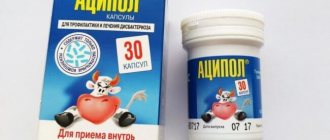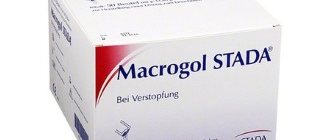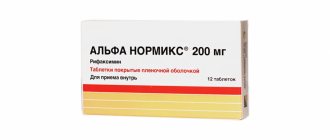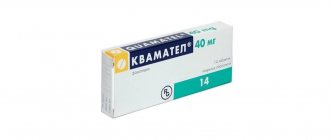Home | About us | Delivery | Advertisers | Login | Registration
Delivery on Sundays and holidays does not work!
- Medicines
- dietary supplementsVitamins
- Categories from A to Z
- Brands from A to Z
- Products from A to Z
- Medical equipment
- beauty
- Child
- Care
- Honey products appointments
- Herbs and herbal teas
- Medical nutrition
- Journey
- Making medicinesStock
Pharmacy online is the best pharmacy in Almaty, delivering medicines to Almaty. An online pharmacy or online pharmacy provides the following types of services: delivery of medicines, medicines to your home. Online pharmacy Almaty or online pharmacy Almaty delivers medicines to your home, as well as home delivery of medicines in Almaty.
my basket
Apteka84.kz is an online pharmacy that offers its customers medicines, medicinal and decorative cosmetics, dietary supplements, vitamins, baby food, intimate products for adults, medical equipment and thousands of other medical and cosmetic products at low prices. All data presented on the Apteka84.kz website is for informational purposes only and is not a substitute for professional medical care. Apteka84.kz strongly recommends that you carefully read the instructions for use contained in each package of medicines and other products. If you currently have any symptoms of the disease, you should seek help from a doctor. You should always tell your doctor or pharmacist about all the medicines you take. If you feel you need further help, please consult your local pharmacist or contact our GP online or by telephone.
© 2022 Pharmacy 84.
As is known, the state of the microbiocenosis of the gastrointestinal tract (GIT) is determined by the ratio of the number of microorganisms coming from outside (≈109 per day), the intensity of their reproduction, death and excretion in feces (1012-1014 per day). Of all the biotopes of the human body, the greatest number and species diversity of bacteria is observed in the intestinal microbiome: 1012-1014 bacteria live on an area of 200 m2 and up to 450-500 species of various microorganisms can be found, the total mass of which reaches 5% of the mass of the intestine itself [1, 2]. The maximum number of bacteria is determined in the contents of the colon - more than 109 in 1 g of feces [3, 4].
The bulk - up to 90% of the entire intestinal microflora - are microorganisms of the so-called main group (bifidobacteria and bacteroides), about 10% are associated microflora (lactobacteria, enterococci, Escherichia), less than 1% are residual microflora (enterobacter, proteus, citrobacter, yeast , clostridia, staphylococci, aerobic bacilli and others).
Normal intestinal microflora is involved in the formation of the immunobiological reactivity of the macroorganism, in the fight against the introduction and reproduction of pathogenic microorganisms, the formation of vitamins B1, B2, B6, C, K, nicotinic, folic acids and biotin, in the sorption and excretion of many microelements, the utilization of undigested food, in enterohepatic circulation of bile acids and detoxification [5-7].
The integrity of the intestinal barrier, consisting of epithelium, mucins and immunoglobulins (Ig) A and which is of absolute importance for health, is ensured, among other things, by the state of the intestinal microbiota. Impaired intestinal barrier integrity plays a role in the pathogenesis of inflammatory bowel diseases, graft-versus-host disease, type 1 diabetes mellitus, celiac disease, septic complications and multiple organ failure [8, 9].
Since the end of the 19th century, scientists have been studying the state of the human intestinal microflora and ways to correct it. More than a hundred years ago, the great Russian scientist, Nobel laureate, professor at the Pasteur Institute I.I. Mechnikov put forward a theory according to which lactic acid bacteria help improve human health and prolong his life. The German professor A. Nissle in 1917 during the First World War, even before the discovery of penicillin by A. Fleming, isolated a non-pathogenic strain of Escherichia coli that did not cause enterocolitis during a severe epidemic of shigellosis [10].
The term “probiotics” was first used by D. Lilly and R. Stilwell [11] in 1965 to refer to microbial substrates that stimulate the growth of other microorganisms.
According to the World Gastroenterological Association, probiotics are live microorganisms that can be included in various foods, medications and dietary supplements. Saccharomyces cerevisae) are most often used as probiotics that have a positive effect on the functions of microflora
) and some strains of Escherichia coli [12]. Probiotics are designed to help the human body, which, due to its evolutionary development, has intestinal microflora [10]. They have a beneficial effect on physiological functions and biochemical reactions by optimizing microbiological status. Bacterial therapy can enhance the beneficial functions of normal microflora [13].
Traditionally, probiotics are the name given to all drugs used to correct intestinal dysbiosis, but according to their composition they are divided into four groups: probiotics themselves - preparations based on microorganisms or their metabolites; prebiotics - contain components that are a nutrient substrate for normal intestinal microflora and promote the growth of this particular population of microorganisms (oligosaccharides, lactulose, lysozyme, pantothenic acid, insulin preparations, para-aminomethylbenzoic acid and others); synbiotics - a combination of a probiotic and a prebiotic; as well as symbiotics - a combination of several probiotics. Syn- and symbiotics are considered the most effective due to the summation of the effects of their constituent components [14].
According to the classification adopted in 1996, four generations are distinguished among drugs that normalize intestinal microflora:
I generation - classic monocomponent preparations containing one strain of bacteria;
II generation - self-eliminating antagonists that are not found in the intestine (for example, drugs based on Bifidobacterium subtilis
,
Bacillus cereus
, mutant strains -
Bacillus
IP 5832);
III generation - combined preparations of syn- and symbiotics (for example, Lactobacillus acidophilus
+
Bifidobacterium infantis
+
Enterococcus faecium
;
L. acidophilus
+
Saccharomyces
;
combination of maltodextrin and biomass of B. bifidum
,
L. acidophilus
,
Lactobacillus bulgaricus
;
a combination of fructooligosaccharides from Jerusalem artichoke and a complex of bifidobacteria and lactobacilli; active metabolites of B. subtilis
+ soy flour hydrolyzate (prebiotic) on zeolite sorbent);
IV generation - live bacteria or their metabolites immobilized on a sorbent: B. bifidum
on activated carbon particles, active metabolites of
B. subtilis
+ soy flour hydrolyzate (prebiotic) on a sorbent - zeolite [15, 16].
The bacteria that make up the probiotics must have a number of important properties that allow them to have only a positive effect on the macroorganism: remain resistant to the action of bile acids, hydrochloric acid and pancreatic enzymes; maintain viability when passing through the gastrointestinal tract; have adhesion properties to the intestinal epithelium; quickly multiply and colonize the intestines; be of natural origin and safe for use in humans; have antagonism to pathogenic and potentially pathogenic microorganisms; have a clinically proven positive effect on human health; remain stable during storage [17, 18].
Probiotic preparations are used to restore intestinal microflora and increase the protective properties of mucous membranes, as well as to relieve and prevent the development of allergic and other immunological reactions [17].
Probiotics reduce the permeability of the intestinal barrier by stimulating the production of protective mucus and IgA, increasing the viability of epithelial cells and increasing the density of intercellular contacts [19].
Increasing the number of bifidobacteria in the colon has beneficial effects on health through the production of vitamins and digestive enzymes, as well as components that inhibit potential pathogens, which reduces blood ammonia levels [10] and may have some significance in the treatment of patients with hepatic encephalopathy.
In some cases, the interstitial environment of probiotics also has a positive effect on the barrier function of the intestinal epithelium. Thus, the interstitial medium of the probiotic VSL#3 increases the viability of the epithelium in vitro
.
This effect is most pronounced in B. infantis
[20, 21].
There is clinical experience of successful prevention and treatment with probiotics of acute viral gastroenteritis, antibiotic-associated diarrhea (AAD), allergies in children, necrotizing enterocolitis and Crohn's disease (CD) [22, 23]. At the International scientific conference on probiotics and prebiotics in 2011, issues of the effectiveness of their use for the correction of atherosclerosis and hypercholesterolemia, obesity, gastrointestinal diseases, as well as their role in preventing the development of cancer, in particular colorectal cancer [14]. To date, information has been obtained on the influence of probiotic metabolic products on the development of type 2 diabetes mellitus, non-alcoholic steatohepatitis, atherosclerosis and predisposition to other systemic diseases [13].
In recent years, there has been a steady trend towards an increase in the number of studies on probiotics: in 2001-2005. they were carried out 4 times more than in 1996-2000. [10, 24].
Probiotics are most often used in gastroenterology, since disorders of the intestinal microflora very often accompany diseases of the digestive system. Currently, recommendations have been developed for the use of probiotics for the prevention and treatment of antibiotic-associated and infectious diarrhea, irritable bowel syndrome (IBS), as well as its inflammatory diseases [25]. In recent years, a sufficient number of studies have appeared confirming the positive effect of probiotics on the eradication of Helicobacter pylori
[26], on the course of ulcerative colitis [27], as well as in the prevention of colon cancer and treatment of hepatic encephalopathy in patients with liver cirrhosis. The most convincing evidence of the effectiveness of probiotics comes from their use to improve the functional state of the intestines and stimulate the immune system [10].
Diseases associated with Helicobacter pylori
Probiotics are prescribed to patients to reduce the side effects of antibiotic therapy for intestinal dysbiosis, AAD and other pathological conditions for a complex effect on H. pylori
. It was noted that with the additional administration of probiotics, not only the state of the intestinal microflora improves, but also the efficiency of pathogen eradication increases [28, 29].
In addition, some patients with diseases associated with H. pylori
, have allergic reactions to antibiotics used to eradicate this pathogen, or refuse to use standard anti-Helicobacter therapy regimens for fear of side effects of the drugs used.
For such patients, the use of probiotics as monotherapy can be recommended, since, while highly effective, drugs in this group do not have as many side effects as the drugs included in standard H. pylori
[30]. In this situation, probiotics based on bifidobacteria, lactobacilli, and enterococci are most often used. There is evidence of a positive effect on the course of helicobacteriosis of saccharomycetes and bacilli.
A number of studies have demonstrated the ability of lacto- and bifidobacteria to inhibit the growth of H. pylori
, including clarithromycin-resistant strains, block their adhesion to epithelial cells [31]. In addition, during Helicobacter pylori infection, probiotics can stimulate the host’s immunity [32].
The results of one study showed that the administration of a synbiotic containing B. subtilis
, together with anti-Helicobacter therapy, prevents the development of intestinal dysbiosis and AAD, and also significantly increases the effectiveness of eradication by 11% [33, 34].
In another study, the use of B. subtilis
as monotherapy for helicobacteriosis achieved successful eradication in 41% of cases [30]. In studies by F. Cremonini et al. (2002) [35] and M. Linsalata et al. (2004) [36] found that an adjuvant course of probiotics can reduce the side effects of triple therapy, in particular diarrhea and nausea, but does not affect eradication rates.
An increase in the effectiveness of eradication therapy under the influence of probiotic microorganisms has been demonstrated. In one study of 138 patients with ineffective triple eradication therapy, 4-week use of probiotic yogurt containing bifidobacteria and lactobacilli before prescribing quadruple eradication therapy significantly increased the therapeutic effect of the latter [37]. In another study, adding a combination of probiotics and lactoferrin to standard triple H. pylori therapy increased the eradication rate of H. pylori
and treatment tolerability was significantly improved [38].
Results from other studies have also demonstrated a reduction in the incidence of side effects of standard anti-Helicobacter therapy regimens when using probiotics [35, 39]. There was an improvement in the tolerability of Helicobacter eradication therapy with the addition of probiotics containing Lactobacillus casei rhamnosus
,
Saccharomyces boulardii
and a combination of
L. acidophilus
and
Bifidobacterium lactis
[35].
in vitro experiments
confirm that strains of lactobacilli, in particular
L. casei Shirota
,
L. brevis
and
L. gasseri
can suppress the growth
of H. pylori
[40–42], and their use for 3–4 weeks can reduce the density of
H. pylori
[42 ].
Meta-analysis of studies using S. boulardii
as an adjuvant treatment in triple therapy also revealed their positive effect on
H. pylori
[43].
It was found that increasing the duration of triple anti-Helicobacter therapy from 7 to 10 or 14 days increases the eradication rate by 4 and 5-6%, respectively; with the additional use of probiotics based on lactobacilli or S. boulardii,
the eradication rate increases on average by 10% (from 5 to 15%). In this situation, preference is given to prescribing enterol in a daily dose of 1 g for 14 days or complex preparations based on bifidobacteria and lactobacilli; in this case, doses of a minimum of 107 CFU per day (usually 5-8∙109) and a maximum of 1.4∙1010 CFU per day are considered effective (duration of therapy is from 7 to 14 days) [44].
Pancreatitis
Analysis of the effectiveness of probiotics in the treatment of pancreatitis shows conflicting data. In the complex treatment of acute pancreatitis, probiotics have not shown high effectiveness. In patients receiving probiotics, there was a tendency to reduce the level of C-reactive protein and immunoglobulins, but the differences compared to the placebo group were not significant [45]. Moreover, one recent clinical trial examining the role of probiotics in the treatment of severe acute pancreatitis (the PROPATRIA trial) found that there was an unexpected increase in mortality rates in patients receiving probiotics [46].
Data regarding chronic pancreatitis are more optimistic. Thus, adding a synbiotic based on B. subtilis
in the complex therapy of chronic pancreatitis increased the effectiveness of correction of exocrine pancreatic insufficiency, quickly relieved the symptoms of intestinal dyspepsia, more significantly increased the level of elastase-1 in the feces compared to the control group, and corrected the intracavitary intestinal environment, which was accompanied by a change in the level of short-chain fatty acids [47].
Irritable bowel syndrome
Probiotics appear to be promising treatments for IBS. By influencing various pathophysiological mechanisms of IBS, probiotics help improve the barrier, motor and digestive functions of the intestine, reduce gas formation in the intestine and other symptoms [48]. In the treatment of IBS, including post-infectious etiology, aimed at restoring the intestinal microflora, probiotics also help normalize the motility of the digestive tube by correcting the synthesis of bacterial metabolites, hormones and neurotransmitters responsible for motor-evacuation function (for example, serotonin), reducing pain, bloating, i.e. they block the main pathogenetic mechanisms of IBS development. The positive effect of probiotics in patients with IBS is most likely associated with the normalization of the immune response during the interaction of the bacterial cell with the host organism [49, 50].
A number of studies report the effectiveness of lactic acid bacteria in the treatment of this pathology [51]. An analysis of 11 studies conducted by scientists from the USA found that the microorganism B. infantis 35624
showed high effectiveness in relieving abdominal pain and discomfort, bloating [52].
Another placebo-controlled 6-month study assessed the effect of a probiotic mixture on IBS symptoms. Its results showed that the administration of probiotics helps reduce symptoms of the disease by 42%, which is significantly higher than in the placebo group [53]. The administration of probiotics based on B. subtilis
significantly reduces the severity and frequency of abdominal pain compared to placebo [54], and also helps to reduce flatulence and rumbling in the abdomen, and normalize stool [55].
One experimental study showed that L. acidophilus
has an analgesic effect for abdominal pain comparable to morphine [56]. It has been established that some intestinal bacteria produce substances that can enhance intestinal motility and suppress the growth of opportunistic microorganisms that are present in large numbers in the intestinal microflora of patients with constipation [57].
The results of the studies showed the effectiveness and safety of B. breve, B. longum, B. infantis, L. acidophilus, L. plantarum, L. casei, L. bulgaricus, S. termophilus, B. animalis
to relieve symptoms of IBS (abdominal pain, diarrhea) [58].
Among others, probiotics based on S. boulardii occupy a special place,
— they overcome the “acid barrier”, are not destroyed by antibiotics, have a direct and indirect antagonistic effect against many opportunistic microorganisms and increase local immunity [59].
According to a meta-analysis of 33 randomized controlled trials, including about three thousand patients with IBS, the use of probiotics helps reduce the severity of symptoms of the disease such as abdominal pain and flatulence [60, 61].
By the end of 2011, more than 66 reviews and meta-analyses had been published examining the effectiveness of probiotics in the treatment of patients suffering from IBS. Most publications reported the high effectiveness of this group of drugs. At the same time, the need for further research was noted to clarify the optimal combination of microorganism strains included in a particular drug, the number of microbial cells in it, the duration of treatment and a correct assessment of its effectiveness [62]. Although most publications have demonstrated the beneficial effects of probiotics, experts believe that further research is needed, primarily on combinations of probiotics with multiple mechanisms of action, to develop clinical guidelines for their use in IBS [63].
Inflammatory bowel diseases
In the pathogenesis of chronic inflammation in CD and nonspecific ulcerative colitis (UC), the main importance is given to the imbalance between pathogenic and non-pathogenic microorganisms in the intestinal lumen. Probiotics play an undoubted role in restoring this imbalance [48]. The effectiveness of probiotics in the complex treatment of inflammatory bowel diseases (UC, CD) is due to the correction of intestinal microbiosis with a decrease in colonies of pathogenic microorganisms that can potentiate damage to the digestive tube, restoration of the intestinal epithelial barrier function, which prevents the penetration of pathogens into epithelial cells, as well as the immunomodulatory effect of probiotics [64, 65]. Their use makes it possible to improve the microbial ecology of the intestine, prevent the appearance of opportunistic microorganisms and stimulate cytoprotective processes in the intestinal mucosa [13, 66, 67].
Bifidobacteria, E. coli, S. boulardii are used in the treatment of inflammatory bowel diseases
, however, the best results were obtained when using probiotics based on
Lactobacillus GG
and
LA1
[68].
The results of clinical trials of probiotics in patients with UC are more convincing than in patients with CD [48] - almost all of them showed clinical or endoscopic improvement, as well as a decrease in the expression of pro-inflammatory cytokines [69].
Probiotics are most effective as drugs for the prevention of exacerbations of UC; their effect is comparable to that of low doses of mesalazine [65, 70].
Several controlled studies have demonstrated the effectiveness of probiotics as maintenance therapy for UC [69, 71–73]. Non-pathogenic E. coli
(strain Nissle 1917) in maintaining remission were comparable in effectiveness to mesalazine [73, 74].
The combination drug VSL-3, when administered in very high doses for 6 weeks, induced remission in 77% of patients with active mild or moderate UC [75]. A controlled study of 187 such patients demonstrated the effectiveness of Lactobacillus GG
in maintaining remission.
It was found that the relapse rate after 6 and 12 months did not differ in the groups receiving Lactobacillus GG
, 5-aminosalicylic acid, or their combination [76].
The highest level of evidence of effectiveness in UC was obtained for the combined probiotic VSL-3. In two clinical placebo-controlled studies, the administration of this probiotic 1 month after achieving complete remission of the disease allowed it to be maintained for 9-12 months in 85% of patients [77, 78]. In the groups of patients receiving placebo, remission remained significantly less frequently during the observation period - in 0 and 6%, respectively. After discontinuation of the VSL-3 drug, disease relapse occurred in 100% of patients [78].
The results of using probiotics in CD are less convincing than in UC. When studying the effectiveness of the combination drug VSL-3 (a mixture of different strains of bifidobacteria, lactobacilli and Streptococcus salivarius thermophilus
) to prevent relapse of CD, it was found that endoscopic signs of relapse of the disease were detected in 10% of patients taking this drug, compared with 40% of patients taking 5-aminosalicylic acid [77].
Ambiguous results have also been obtained regarding the use of probiotics to prevent relapses in patients with CD who have undergone surgical treatment [48].
The authors of a Cochrane systematic review were unable to draw a conclusion based on the data obtained about the value of probiotics as a maintenance treatment for CD [79]. Also, controversial conclusions can be drawn when analyzing the effectiveness of probiotics in patients with active disease [80].
Non-alcoholic fatty liver disease
The hypothesis that intestinal microflora is involved in cholesterol metabolism has existed since the beginning of the twentieth century. Since then, much evidence has accumulated that the resident and transient microflora of the host, by synthesizing, transforming or destroying exo- and endogenous sterols, actively participates in stearin metabolism [81].
In 2001, Carneiro de Mur [82] proposed a theory about disruption of the microbial community in the colon as one of the ways in which lipid metabolism disorders occur. Microorganisms that live in the intestine metabolize cholesterol that enters the large intestine into coprostanol and then into coprostanone. Acetate and propionate formed as a result of fermentation, being absorbed into the blood and reaching the liver, can affect the synthesis of cholesterol. In particular, it has been shown that acetate stimulates its synthesis, and propionate inhibits it. The third way microflora influences lipid metabolism in the macroorganism is associated with the ability of bacteria to metabolize bile acids, in particular cholic acid. An increase in pH values in the colon due to various reasons contributes to an increase in the activity of enzymes leading to the synthesis of deoxycholic acid, an increase in its solubility and absorption, and, as a consequence, an increase in the level of bile acids, cholesterol and triglycerides in the blood [81]. One of the reasons for the increase in pH may be a lack of prebiotic components in the diet, which disrupt the growth of normal microflora, including bifidobacteria and lactobacilli [83, 84].
The effectiveness of probiotics is being actively studied in the treatment of non-alcoholic fatty liver disease (NAFLD). Intestinal flora can contribute to the development of obesity [10].
Today, there is no doubt that therapy for NAFLD should be comprehensive, aimed at correcting dysbiotic changes in the colon as one of the factors in the development of dyslipidemia. It should be noted that probiotic therapy not only helps to correct one’s own dysbiosis, but also has a beneficial effect on physiological reactions, the psycho-emotional state of a person, neutralizes the side effects of pharmacotherapy and, in addition, has a high degree of safety. It has been established that with dyslipidemia (for example, with obliterating atherosclerosis, fatty liver, metabolic syndrome), pronounced disturbances in the intestinal microecology occur, resulting in endotoxemia, bacterial translocation, and impaired liver function and structure. Liver dysfunction in dyslipoproteinemia is caused mainly by disruption of the microbial landscape of the colon, expressed by a decrease in the total level of volatile fatty acids and an increase in the anaerobic index, characteristic of the inhibition of resident intestinal microflora. Thus, a vicious circle is created: disruption of intestinal microecology → accumulation of endotoxins → disruption of enterohepatic circulation of bile acids → dysfunction of the liver → disruption of lipid metabolism → disruption of the liver structure (fatty infiltration, fibrosis) → disruption of lipid metabolism → maintenance (worsening) of disrupted intestinal dysbiosis [ 81].
Antibiotic-associated diarrhea
For the treatment and prevention of AAD, probiotics can be used - “live microorganisms that, when administered in adequate quantities, have a positive effect on the health of the host” (WHO, 2001) [85].
Meta-analyses suggest an overall reduction in the risk of AAD during probiotic treatment (odds ratio 0.39 versus 0.37 with placebo) [86–89].
Information on the clinical effect of probiotics in the prevention of AAD is widely reported in the literature. The results of several meta-analyses have shown a significant benefit from the administration of probiotics, with a combination of probiotic bacterial strains being more effective [88, 90–96]. An analysis of 63 randomized controlled trials involving 11,811 patients found that taking probiotics significantly reduced the risk of AAD. The authors of a second meta-analysis, published in 2012, came to a similar conclusion. Based on a study of 34 randomized controlled trials, including 4138 patients, it was found that the relative risk of AAD in the probiotics group versus placebo was 0.53, and with H. pylori
— 0,37 [10, 44].
The preventive effect against AAD has not been proven for all probiotics. One meta-analysis showed that a significant reduction in the incidence of diarrhea was associated only with the use of probiotics containing L. rhamnosus GG
,
S. boulardii
or probiotic combinations;
for the treatment of recurrent pseudomembranous colitis associated with Clostridium difficile
, according to a meta-analysis,
S. boulardii
[95].
Traveler's diarrhea
The results of clinical studies of monoprobiotics are contradictory, although with the combination of L. acidophilus
,
L. bulgaricus
and
S. thermophilus
showed a decrease in the incidence of travelers' diarrhea from 71 to 43% [97]. The use of probiotics for travelers' diarrhea is considered a promising direction and requires further clinical study [98].
Multispecies and multistrain probiotics
In 2004, H. Timmerman et al. [91] proposed a classification of probiotic products, identifying single-strain, containing one strain, multi-strain, which includes several strains of the same type of microorganisms, and multi-species, consisting of strains of different species belonging to the same or, more preferably, different families of intestinal bacteria. Multispecies probiotics have a clear advantage over single-strain and even multi-strain probiotics, since they are able to act in various biotopes of the gastrointestinal tract and reproduce a complex ecosystem in the intestinal lumen.
If a probiotic preparation contains a single bacterial strain, then its ability to perform the basic functions characteristic of many normal intestinal bacteria seems unlikely [99].
Currently, multi-strain and multi-species probiotics are among the most successful - in terms of effectiveness, good tolerability and low nominal price - drugs from the group of probiotics. As a practical illustration of the above, we can cite the positive experience of Europe in the active use of VSL#3 for inflammatory bowel diseases, as well as an innovative series of probiotic complexes called Ecologyc, which have a full-fledged scientific dossier justifying the differentiated management of microbial cells of indigenous microflora [90].
It has been established that multispecies probiotics can be used to prevent AAD, since they have a positive effect on the composition and metabolic activity of fecal microflora [57].
Scientific approaches to the creation of new probiotic agents and technologies for their production are constantly being improved. Winclove Bio Industries BV, with the participation of leading specialists from university hospitals in the Netherlands, has developed and introduced an innovative range of probiotics, called Ecologic, designed for scientifically based management of intestinal microflora. As a result, six Ecologic specialty probiotics have been created that are differentially used for AAD, traveler's diarrhea, allergies, inflammatory bowel disease, constipation and vaginal infections. Due to the presence of a special matrix in Ecologic probiotics, the bacteria included in their composition are characterized by their high activity, good survival in the gastrointestinal tract and the ability to be stored at room temperature without prior freezing for at least 2 years. The presence of the above-mentioned special matrix, which imitates intestinal biofilm, ensures the preservation of the number of viable microorganisms during the passage of the gastrointestinal tract, and, accordingly, the probiotic potential. An important advantage of these probiotics is the physiological state of microorganisms without destruction of the bacterial cell wall that occurs during lyophilization, and without the loss of most of the exogenous metabolites during the preparation of these drugs [90].
RioFlora Balance Neo
Since 2011, two innovative probiotic complexes for adults and children over 3 years of age, developed (Netherlands) - RioFlora Balance Neo and RioFlora Immuno Neo - have been introduced in Russia [100]. The combination of probiotic strains in RioFlora was selected so that they have synergistic and symbiotic effects with the maximum likelihood of achieving a clinical effect. Both probiotic complexes of RioFlora normalize the composition of the intestinal microbiota [101].
The probiotic RioFlora Balance Neo contains a balanced combination of 8 viable bacteria of the following production strains: B. lactis
,
L. plantarum
,
B. bifidum
,
L. acidophilus W37
and
W55
,
L. rhamnosus
,
L. paracasei
,
L. salivarius
. Each capsule contains at least 5.0∙108 CFU of living lyophilized microorganisms, which are characterized by strict regulation of therapeutic effects. The microorganisms contained in the drug prevent the proliferation of pathogenic intestinal microflora, restore the natural barrier and prevent the penetration of pathogenic bacteria into the human body, and also help increase the level of immunoglobulins necessary for identifying and neutralizing bacteria and viruses. RioFlora Balance Neo is prescribed 2 capsules 2 times a day before meals for 10-14 days to 1 month. There are no guidelines for the maximum duration of use [100].
Being a multi-species drug, RioFlora Balance Neo has an effect on 3 levels of the body: in the intestinal lumen (protection from pathogenic microbes), on the intestinal wall (restoration of the tight junction of epithelial cells), in the immune system (activation of the production of secretory IgA - sIgA - and healthy interleukin 10 microflora) [102].
The drug reduces the risk of developing intestinal disorders caused by taking antibiotics; normalizes the composition of intestinal microflora, helping to improve the functional state of the intestine during diarrhea or constipation; ensures normal digestion, as well as the body’s natural protection from infections and exposure to adverse environmental factors. Due to the fact that the bacteria that make up RioFlora Balance Neo are resistant to most antibiotics, this product can be used simultaneously with antibiotic therapy [90].
RioFlora Balance Neo, among other effects, initiates the restoration of intestinal microbiocenosis and other physiological processes after trophic damage to the colon mucosa, improves cavity digestion and thereby affects the parameters of physical development [91].
Evidence-based studies show not only the preventive advantage of the drug, but also its ability to prolong the effect in the early and late periods of post-diarrheal rehabilitation [90].
It has been established that RioFlora Balance Neo has a positive effect on the metabolic activity of intestinal microflora. Its use restores the normal metabolism of microflora, restructuring its vital activity to synthesize short-chain fatty acids necessary for intestinal functions. A distinctive positive feature of this probiotic is the activation of the synthesis of butyrate (butyric acid), the most important waste product of the intestinal microflora, which regulates the processes of proliferation of the intestinal mucosa and is a natural oncoprotector [59].
Domestic researchers S.S. Vyalov et al. [103], based on their own research, recommended the use of the effective and safe drug RioFlora to correct constipation in women throughout the entire period of pregnancy. CM. Zakharenko [104] presented preliminary results of his own experience of observing patients who were treated with amoxicillin for 5-7 days for bacterial tonsillitis and pharyngitis simultaneously with the drug RioFlora Balance Neo, prescribed for 7-10 days. As a result, the volume of normal microflora in the intestine increased, and the incidence of AAD decreased. Thus, a number of studies have shown the effectiveness of innovative multiprobiotic complexes RioFlora in the prevention and treatment of intestinal microbiocenosis disorders of various etiologies [100].
Currently, large research centers in Russia are conducting clinical studies to gain their own experience in the use of these drugs in the treatment of patients with various pathologies to clarify treatment approaches based on modern scientific facts [100].
In conclusion, I would like to share my own little










